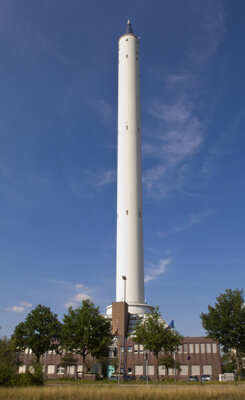Your chance to spin or drop your thesis!
Are you a university student who dreams of using a world-class gravitational facility for experiments? If yes then ESA’s Education Office wants to hear from you. All you have to decide is whether you want to go heavy or light. In other words: hypergravity or microgravity?
The deadline for the hypergravity Spin Your Thesis! 2014 programme has been extended to 20 January 2014 so that as many students as possible have the chance to apply for this opportunity. The chosen teams will spend 5 days at the ESA’s largest centre, the European Space Research and Technology Centre (ESTEC) in Noordwijk, the Netherlands.
They will have individual use of the Large Diameter Centrifuge (LDC) for two and a half days, giving them plenty of time to collect data.
The LDC is very different from a standard laboratory centrifuge.8 metres in diameter, it is so large that it is housed in its own hall. It can hold an experiment up to 80kg and spin so fast that it can simulate a pull of gravity 20 times larger than that experienced at Earth’s surface.
Students will have the opportunity to meet and work with ESA engineers to get the most out of their time on the centrifuge. During their campaign , the students can vary the speed of the centrifuge and the duration of their experimental runs as their needs dictate. They can even use the LIS (Life and Physical Sciences Instrumentation and Life Support Laboratories) facilities and instruments for the preparation or modification of their experiment set-up, and the preliminary analysis of their data or samples.

If that all sounds too heavy and microgravity is more your thing, then ESA’s Education Office also offers the Drop Your Thesis! Programme. Here, a chosen team of university students spends two weeks at the Center of Applied Space Technology and Microgravity (ZARM), Bremen, Germany, using the drop tower.
This is a unique facility in Europe and has been referred to as Germany’s antigravity machine. It is a tower, 146 metres in height. By allowing experiments to fall freely inside, it can provide up to 9.3 seconds of microgravity conditions, as if the experiment had been taken into space.
The chosen student team will work onsite with engineers from ZARM and ESA, who will help them set-up experiments and get the most out of their allotted time. The ZARM workshops will also be available to the teams for essential last minute tweaks and tune-ups.
The team will be awarded five uses of the drop tower. There will be a day between each of these ‘launches’ to allow the students some time to work on the data and decide on what to do for the next one.
Teams from ESA Member States and Cooperating States* that are interested in participating in one of these two unique opportunities, should register on the ESA Education Office's project portal and upload their completed application by 20 January 2014.
The conditions to apply and the eligibility criteria for both programmes can be found on the ESA Education website.
If you want to have a look at what these campaigns look like, watch our videos.
Notes for editors
For more information, please contact:
Natacha Callens
ESA Educational Programmes Coordinator
Email: Natacha.Callens @ esa.int
|
* ESA Member States in 2013 Austria, Belgium, Czech Republic, Denmark, Finland, France, Germany, Greece, Ireland, Italy, Luxembourg, the Netherlands, Norway, Portugal, Poland, Romania, Spain, Sweden, Switzerland, United Kingdom and Canada (Associate Member). European Cooperating States Estonia, Hungary, Slovenia, Latvia Cooperating States Cyprus, Lithuania, Malta, Slovakia |




